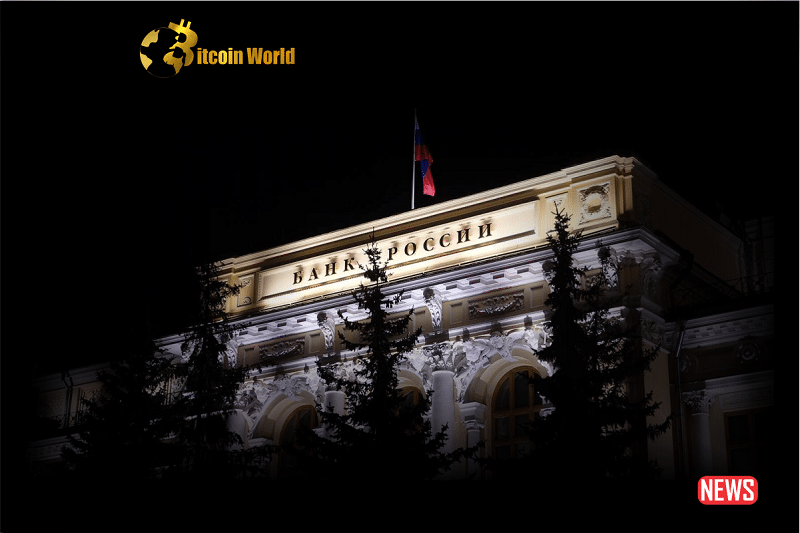Get ready for a shake-up in the digital finance world! Russia is gearing up to launch real-world tests of its central bank digital currency (CBDC), the digital ruble, as early as August. This move, hot on the heels of crucial legislation passed by the State Duma, signals a significant step in Russia’s financial evolution. But what does this mean for the future of money and international trade?
Why the Digital Ruble, and Why Now?
The green light for these real-world trials comes after the State Duma approved key clauses of the digital ruble bill, slated to become law on August 1, 2023. While the Central Bank initially aimed for a pilot launch in March using actual digital ruble tokens, the absence of a clear legal framework caused a delay. Now, with the legal hurdles cleared, the stage is set for the digital ruble’s debut. The Central Bank has been diligently preparing, forging partnerships with 13 commercial banks to ensure a smooth pilot program.
The Driving Force Behind Russia’s CBDC Push
So, what’s fueling this push towards a digital ruble? Several factors are at play:
- Sanctions and International Trade: The US-led sanctions following the conflict in Ukraine have significantly impacted Russia’s access to dollar-based international trade. This has spurred a search for alternative currencies, with businesses exploring options like the Chinese yuan and even cryptocurrencies for trade settlements.
- Citizen Interest in Alternatives: Russian citizens are increasingly interested in diversifying their financial holdings, with many opening yuan accounts and exploring crypto assets. The potential adoption of China’s digital yuan is also on the radar.
- Central Bank Control: While open to temporary use of “private cryptocurrencies” for trade, the Central Bank ultimately favors more controlled solutions like interoperable CBDCs, gold-backed stablecoins, and digital assets within the BRICS economic bloc.
What Does the Legislation Say? Key Takeaways
The newly approved legislation provides the essential groundwork for the digital ruble’s operation. Here’s a breakdown of the crucial aspects:
- Central Bank Authority: The Central Bank has the power to restrict individual commercial banks from dealing with the digital ruble, define the specific users allowed on the platform, and set transaction limits and thresholds.
- No Interest, No Joint Wallets: The legislation explicitly prohibits the accumulation of interest on digital ruble holdings and prevents the opening of joint wallets. This emphasizes the digital ruble’s function as a means of payment rather than an investment vehicle.
- Platform Establishment: The bill formally establishes the platform for the digital ruble, providing the legal foundation for its infrastructure and operations.
Real-World Testing: What to Expect?
With the legal framework in place, the focus now shifts to the real-world tests. Olga Skorobogatova, the Central Bank’s First Deputy Governor, previously indicated the intention to launch these “first real operations” in July-August. While details of the pilot program are still emerging, it’s expected to involve a select group of users and transactions to assess the digital ruble’s functionality and identify any potential issues.
Looking Ahead: Cross-Border CBDCs and the BRICS Currency
The ambitions for the digital ruble extend beyond domestic use. Skorobogatova has voiced interest in the potential of cross-border CBDCs, acknowledging the complexities involved in their implementation. Furthermore, Elvira Nabiullina, the Central Bank Governor, has floated the idea of a unified currency for the BRICS alliance. However, she stressed that this is a long-term, complex undertaking requiring consensus among all member nations. The immediate focus remains on facilitating bilateral settlements using national currencies and building the infrastructure to connect existing payment systems.
Challenges and Opportunities
The introduction of the digital ruble presents both opportunities and challenges:
| Opportunities | Challenges |
|---|---|
| Reduced reliance on the US dollar for international trade. | Ensuring cybersecurity and preventing illicit activities. |
| Increased efficiency and lower transaction costs. | Public adoption and understanding of the new system. |
| Greater financial inclusion for underserved populations. | Potential impact on the existing banking system. |
| Enhanced transparency and traceability of transactions. | Navigating the complexities of cross-border CBDC interoperability. |
What Does This Mean for You?
While the initial real-world tests will involve a limited group, the development of the digital ruble is something to watch closely. Here are a few things to consider:
- Stay Informed: Keep up-to-date on the progress of the digital ruble’s testing and future rollout plans.
- Understand the Implications: Consider how a digital ruble could impact domestic and international payments, trade, and financial stability.
- Consider the Broader Trend: Russia is not alone in exploring CBDCs. Many countries are actively researching and developing their own digital currencies, signaling a potential shift in the global financial landscape.
The Bottom Line
The upcoming real-world tests of the digital ruble mark a pivotal moment in Russia’s financial landscape. Driven by geopolitical factors and a desire for greater financial autonomy, the Central Bank is pushing forward with its CBDC ambitions. While challenges remain, the potential for a digital ruble to reshape domestic and international finance is undeniable. As the August launch approaches, the world will be watching closely to see how this new chapter in digital currency unfolds.
Disclaimer: The information provided is not trading advice, Bitcoinworld.co.in holds no liability for any investments made based on the information provided on this page. We strongly recommend independent research and/or consultation with a qualified professional before making any investment decisions.


